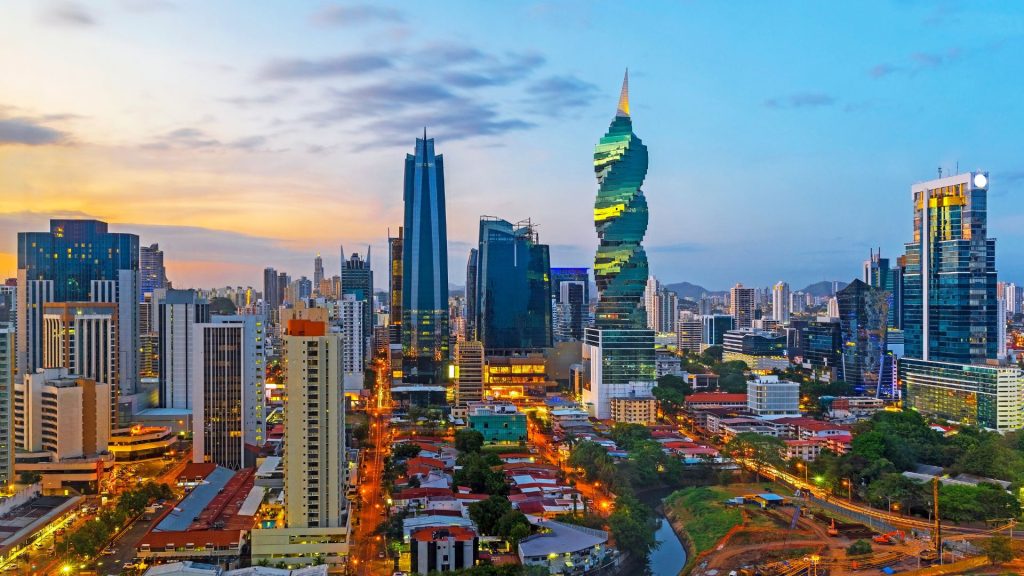Navigating New Visa Changes
Introduction
For decades, Mexico has been the go-to destination for American retirees seeking an affordable lifestyle abroad. Its proximity to the U.S., established expatriate communities, and traditionally accessible visa requirements made it the logical first choice for seniors looking to stretch their Social Security dollars further.
But in a shocking development that has caught many prospective retirees off guard, Mexico has dramatically increased the financial requirements for its residency visas in 2025. This change raises an urgent question for thousands of American seniors: Is Mexico still a viable option for those living primarily on Social Security benefits?
The answer isn’t simple, but it requires immediate attention if Mexico is on your retirement radar. Let’s break down what’s changed, what it means for you, and what alternatives exist for those determined to enjoy an affordable retirement south of the border.
The New Financial Reality: A Dramatic Shift
Previous vs. Current Requirements
The financial requirements for Mexican residency have more than doubled in recent years:
Temporary Residency Visa (Residente Temporal)
- 2023 requirement: Approximately $2,100/month income
- 2025 requirement: $4,185/month income over the last 6 months ($5,585 for couples)
Permanent Residency Visa (Residente Permanente)
- 2023 requirement: Approximately $2,700/month income
- 2025 requirement: $6,975/month income over the last 6 months
The Social Security Gap
According to the Social Security Administration, the average retirement benefit in 2025 is approximately $1,900 per month. Even for couples both receiving benefits, the combined average of $3,800 falls short of the new temporary residency requirement.
This creates a substantial gap:
- Single retiree gap: $2,285/month short of requirements
- Average retired couple gap: $1,785/month short of requirements
For the approximately 40% of American seniors who rely on Social Security for 90% or more of their income, these new thresholds present a formidable barrier to legal residency in Mexico.

Alternative Pathways to Mexican Residency
While the income requirements have increased dramatically, there are still several potential pathways to legal residency in Mexico for retirees on fixed incomes:
The Savings/Investment Option
Instead of proving monthly income, applicants can qualify by demonstrating sufficient savings or investments:
- Temporary Residency: Approximately $69,750 in savings/investments
- Permanent Residency: Approximately $278,000 in savings/investments
For retirees who own a home in the U.S. or have retirement accounts, this pathway may be more accessible than the income requirement. The funds must be held in an account for at least 12 months prior to application.
Family Unity Visas
If you have family members who are Mexican citizens or permanent residents, you may qualify for a family unity visa, which has no financial requirements. This applies to:
- Spouses of Mexican citizens or permanent residents
- Parents of Mexican citizens
- Children of Mexican citizens or permanent residents
Consulate Discretion
Immigration attorneys in Mexico report that different Mexican consulates in the U.S. may exercise some discretion in how they apply these requirements. Some observations:
- Some consulates may accept combined household income for married couples
- Some may give more weight to applicants with property ownership in Mexico
- Some may consider total financial picture rather than strictly monthly income
Working with an experienced immigration attorney and carefully selecting which consulate to apply through can sometimes make a difference.
The Tourist Visa Strategy: Viable or Risky?
With the higher residency requirements, more retirees are considering using Mexico’s 180-day tourist visa as an alternative. Here’s what you need to know:
How the Tourist Visa Works
- U.S. citizens can enter Mexico for up to 180 days (approximately 6 months) as tourists
- No income or savings requirements
- Simple passport presentation at the border or airport
- No application process required
The "Border Run" Reality
Historically, many expatriates have lived in Mexico by doing “border runs”—leaving the country briefly before the 180 days expire, then re-entering for another 180-day period. Important considerations:
- This practice is not officially sanctioned by Mexican immigration
- Enforcement has been tightening in recent years
- Some travelers report receiving shorter stays (30-90 days instead of 180)
- Immigration officers have discretion to deny entry
- Digital systems now track total time in country
Legal and Practical Limitations
Living on tourist visas comes with significant restrictions:
- Cannot open Mexican bank accounts
- Cannot register vehicles in Mexico
- No access to resident ID card (CURP)
- Limited access to healthcare systems
- Cannot legally work or start a business
- No path to permanent status or citizenship
The Enforcement Reality
An immigration attorney from Ajijic reports: “We’re seeing increased scrutiny at borders and airports. Immigration officials are now regularly checking previous entry stamps and questioning those who appear to be living in Mexico on tourist visas. Several clients have been denied re-entry or given significantly shorter stays in 2025.”

Cost of Living Updates: Is Mexico Still Affordable?
Despite the visa challenges, Mexico’s cost of living remains significantly lower than the United States. Recent data from popular expatriate destinations:
Lake Chapala/Ajijic Area
- One-bedroom apartment rental: $500-700/month
- Two-bedroom home rental: $700-1,000/month
- Basic utilities: $50-100/month
- Dining out (mid-range restaurant): $10-15 per person
- Healthcare (private insurance): $100-200/month
- Groceries for one person: $200-300/month
Puerto Vallarta
- One-bedroom apartment rental: $600-900/month
- Two-bedroom home rental: $800-1,200/month
- Basic utilities: $70-120/month
- Dining out (mid-range restaurant): $15-20 per person
- Healthcare (private insurance): $120-250/month
- Groceries for one person: $250-350/month
San Miguel de Allende
- One-bedroom apartment rental: $700-1,000/month
- Two-bedroom home rental: $900-1,500/month
- Basic utilities: $60-110/month
- Dining out (mid-range restaurant): $15-25 per person
- Healthcare (private insurance): $120-250/month
- Groceries for one person: $250-350/month
Comparison to U.S. Costs
A retiree living on $1,900/month would struggle in most U.S. locations where:
- Average one-bedroom apartment rental: $1,200-1,800/month
- Basic utilities: $150-250/month
- Dining out (mid-range restaurant): $25-40 per person
- Healthcare (Medicare supplements): $150-300/month
- Groceries for one person: $400-600/month
Even with the visa challenges, Mexico still offers a 40-60% cost reduction compared to the U.S., making it financially attractive if the residency hurdle can be overcome.
Alternative Destinations to Consider
For retirees unable to meet Mexico’s new financial requirements, several other countries offer more accessible visa options while maintaining affordable living costs:

Panama: The Pensionado Program
- Income requirement: $1,000/month from a guaranteed pension source
- Benefits: Extensive discounts on medical services, entertainment, restaurants
- Cost of living: Similar to Mexico in many areas
- Proximity to U.S.: Direct flights from major cities
- Healthcare quality: Excellent, with Johns Hopkins-affiliated hospitals
Ecuador: Retirement Visa
- Income requirement: $1,380/month from pension or Social Security
- Alternative: $12,500 in a bank account
- Cost of living: Among the lowest in Latin America
- Climate options: From coastal to highland environments
- Healthcare: Good quality at very low costs
Costa Rica: Pensionado Program
- Income requirement: $1,000/month from guaranteed pension
- Stability: Long-standing democracy with no army
- Healthcare: Excellent public and private systems
- Environmental quality: Clean water, air, and abundant nature
- Established expatriate communities
Portugal: D7 Visa
- Income requirement: Approximately €870/month (about $950)
- European lifestyle at a fraction of Western European costs
- Excellent healthcare system
- Mild climate and beautiful coastlines
- Potential path to EU citizenship

Expert Perspectives
Immigration Attorney Perspective
One immigration Attorney in Guadalajara, notes: “These increases have created significant challenges for American retirees. We’re advising clients to consider the savings qualification route when possible. For those with at least $69,750 in savings or investments, this is often the most straightforward path. We’re also seeing more interest in family unity visas for those with Mexican family connections.”
Financial Advisor Perspective
A financial advisor specializing in expatriate retirement, advises: “For clients set on Mexico but unable to meet the income requirements, we’re looking at restructuring retirement accounts to generate higher documented income. In some cases, converting a portion of IRAs to annuities can help create the paper trail of income needed, though this strategy isn’t right for everyone.”
Practical Strategies for Prospective Mexico Retirees
1. Explore the Savings Option
If you have retirement savings but limited monthly income, the savings qualification route ($69,750 for temporary residency) may be more accessible than the income requirement.
2. Consider Couples Strategies
Some consulates may be more flexible with married couples, allowing combined income or considering overall household financial stability rather than strict individual income.
3. Test Before Committing
Spend time in Mexico on tourist visas before making permanent decisions. Use this time to explore different regions and determine if the lifestyle meets your expectations.
4. Consult Immigration Specialists
Work with attorneys who specialize in Mexican immigration law and stay current on changing requirements and consulate-specific practices.
5. Explore Alternative Destinations
Use this opportunity to consider other affordable countries with more accessible visa requirements, such as Panama, Ecuador, or Portugal.
6. Consider Part-Time Arrangements
Some retirees are adopting a hybrid approach—spending up to 180 days in Mexico as tourists, then returning to the U.S. or visiting other countries for the remainder of the year.

Conclusion: Is Mexico Still Viable for Social Security Retirees?
The dramatic increase in Mexico’s financial requirements has undeniably made it more challenging for American retirees living solely on Social Security to obtain legal residency. However, Mexico hasn’t become completely inaccessible:
- For retirees with savings or investments beyond their monthly benefits, the financial assets pathway remains viable
- Couples combining benefits may still qualify, especially with strategic consulate selection
- The tourist visa option, while not ideal for permanent living, provides a way to enjoy Mexico part-time
- Mexico’s cost of living advantages remain significant, even with the visa challenges
For those unable to meet the new requirements, several alternative countries offer similar or better cost advantages with more accessible visa programs. This may be the perfect opportunity to explore options you might not have previously considered.
The key takeaway? Retirement abroad remains a viable strategy for stretching your Social Security dollars further, but flexibility in destination choice and careful planning are more important than ever.
Additional Resources
Official Information
- Mexican Consulate Finder – Locate your nearest Mexican consulate
- Instituto Nacional de Migración – Official Mexican immigration authority
Helpful Services
- Mexico Relocation Guide – Updated information on residency requirements
- Mexperience – Comprehensive resource for living in Mexico
Related Articles on Affordable Retirement Abroad
- Yes, You CAN Afford to Retire Abroad – Our overview of affordable retirement options overseas
- Social Security Abroad: A Complete Guide for American Retirees – Understanding your benefits while living overseas
- Retirement Visas Explained: Your Guide to Living Legally Abroad – Comprehensive guide to visa options worldwide
Join Our Community Today
Get expert insights and exclusive tools to plan your affordable overseas retirement. Subscribe for our free newsletter. Just enter your email below:







